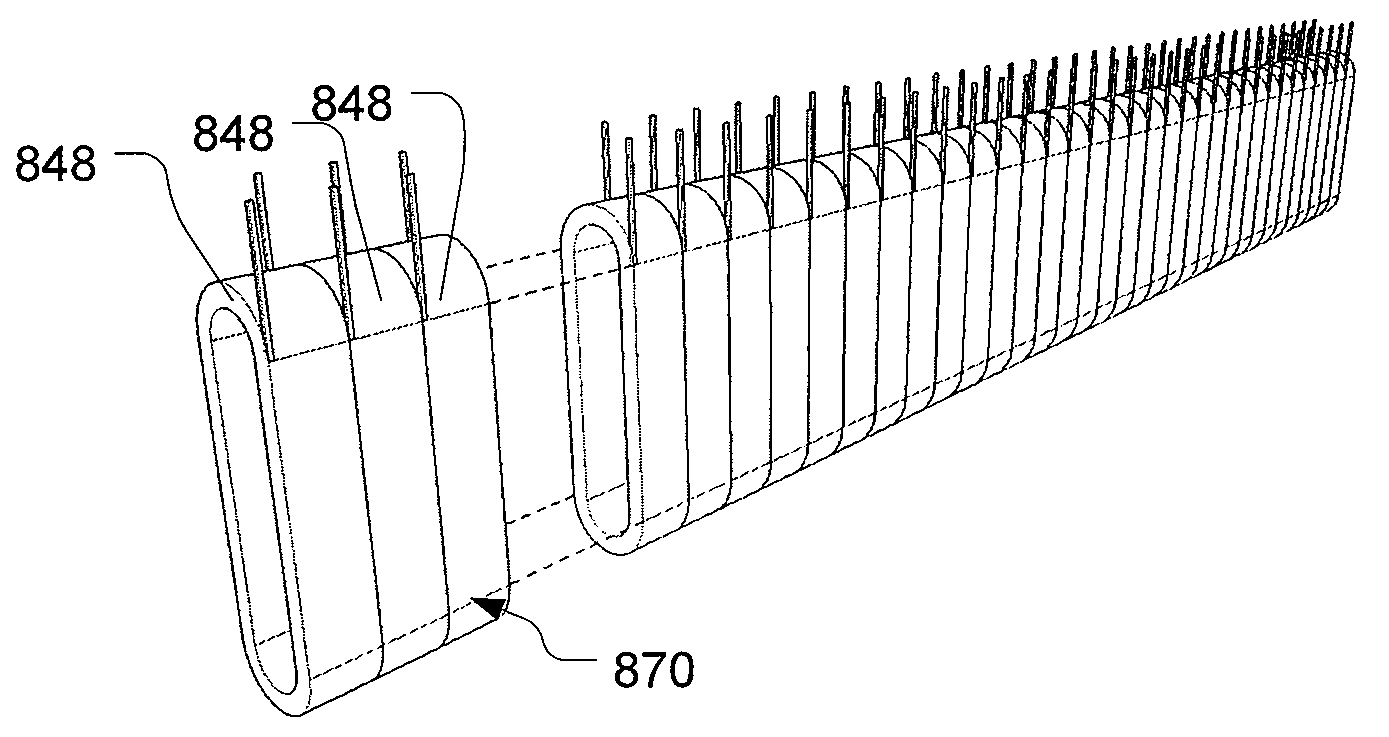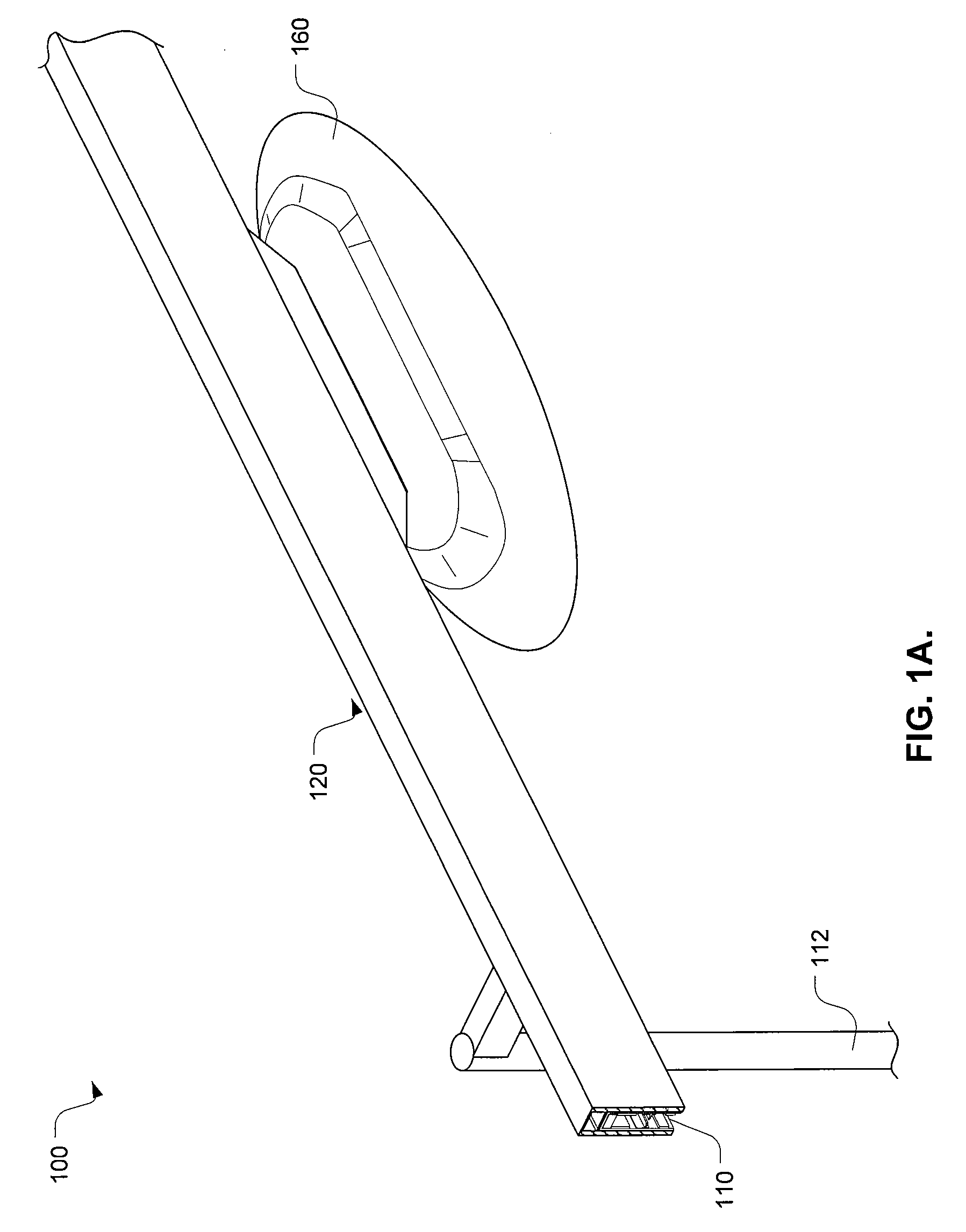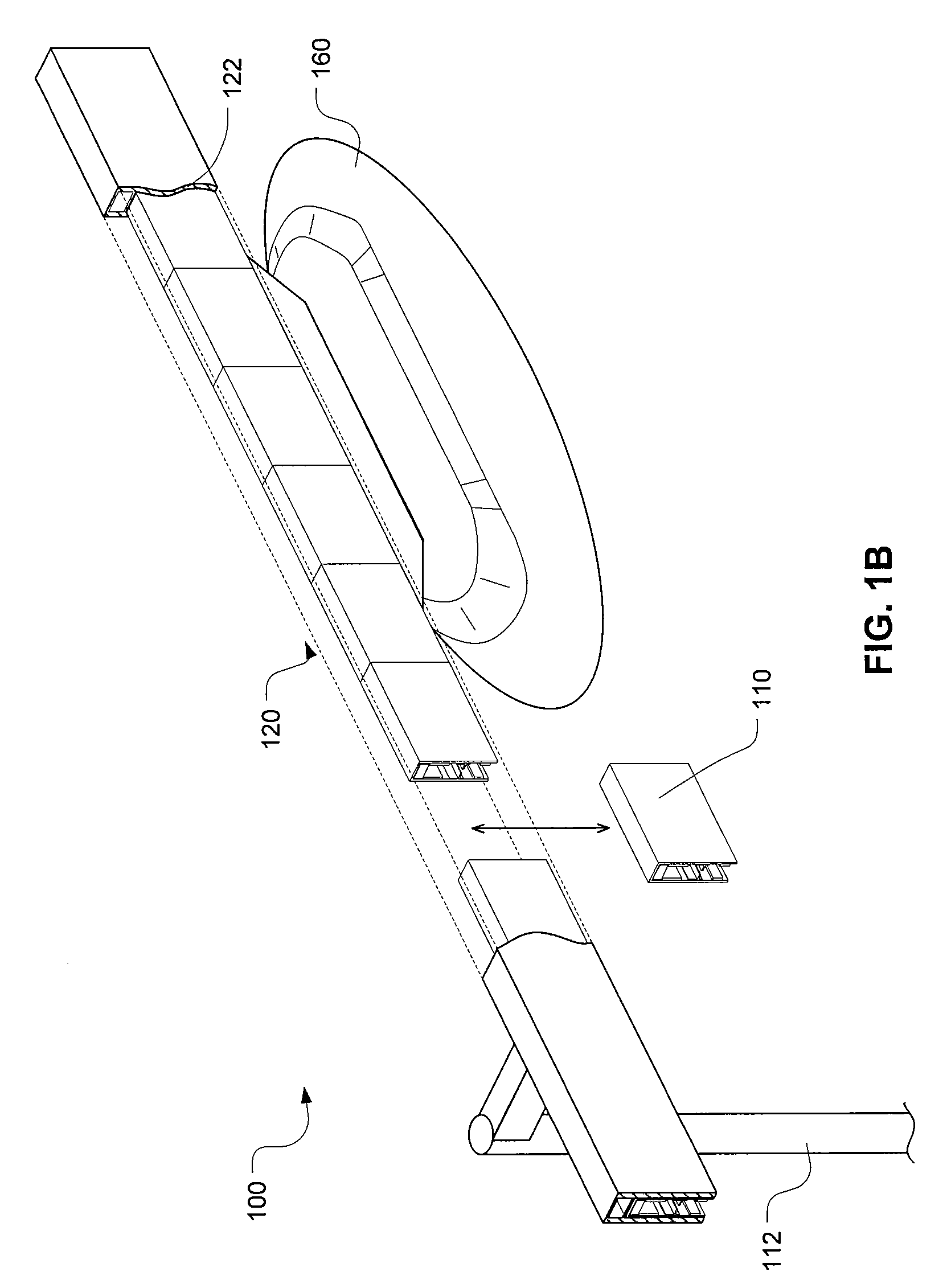Transit system vehicle guideway constructed from modular elements and using magnetic levitation for suspension and propulsion vehicles
a transit system and vehicle guideway technology, applied in the field of networked guideway transit systems, can solve the problems of unavoidable wear accompanying wheels rolling on tracks, add significantly to the complexity and potential failure points of prt systems, and achieve the effect of reducing the static weight, cost and physical size of the guideway structure, and facilitating the installation of the vehicl
- Summary
- Abstract
- Description
- Claims
- Application Information
AI Technical Summary
Benefits of technology
Problems solved by technology
Method used
Image
Examples
Embodiment Construction
[0024]A method and system to integrate magnetic levitation technologies within a networked guideway transit system is provided. A method and system is also provided for modeling the networked guideway transit system as a form of packet switched data transfer network using a globally unique identifier. The magnetic levitation is used to replace wheels as the primary means of vehicle suspension and thus the automated transit systems (e.g., PRT system) can be made commercially and economically feasible. More specifically, a method and system use permanent magnet repulsion with induction-based repulsion within the networked guideway transport system, which can levitate passively with motion.
[0025]Generally described, the networked guideway transit system combines permanent magnet levitation with electrodynamic stabilization and linear motor propulsion. That is, the networked guideway transit system uses the permanent magnets to provide primary lift and uses electrodynamic repulsion to c...
PUM
 Login to View More
Login to View More Abstract
Description
Claims
Application Information
 Login to View More
Login to View More - R&D
- Intellectual Property
- Life Sciences
- Materials
- Tech Scout
- Unparalleled Data Quality
- Higher Quality Content
- 60% Fewer Hallucinations
Browse by: Latest US Patents, China's latest patents, Technical Efficacy Thesaurus, Application Domain, Technology Topic, Popular Technical Reports.
© 2025 PatSnap. All rights reserved.Legal|Privacy policy|Modern Slavery Act Transparency Statement|Sitemap|About US| Contact US: help@patsnap.com



